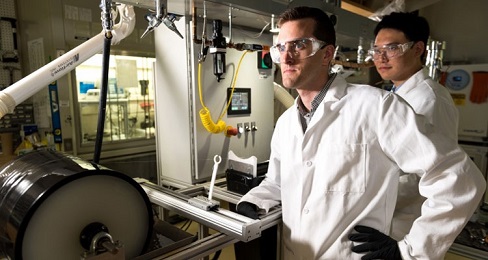Scientists from ExxonMobil and Georgia Tech have developed a revolutionary new technology that, if brought to industrial scale, could reduce industry’s global annual carbon dioxide emissions by up to 45 million tons. It could also reduce global energy costs by up to $2 billion a year.
This Technology Could Cut Global Energy Costs by $2 Billion per Year - Arhive

This Technology Could Cut Global Energy Costs by $2 Billion per Year
As Georgia Tech’s Research News explains, the technology involves a new carbon-based molecular sieve membrane that could dramatically reduce the energy required to separate a class of hydrocarbon molecules known as alkyl aromatics. The new material is based on polymer hollow fibers treated to retain their structure – and pore sizes – as they are converted to carbon through pyrolysis. The carbon membranes are then used in a new “organic solvent reverse osmosis” (OSRO) process in which pressure is applied to affect the separation without requiring a phase change in the chemical mixture.
According to Georgia Tech, reverse osmosis membranes are already widely used in desalination to produce drinking water from saltwater and carbon fiber membranes have been used for gas separations, but the new OSRO process is believed to be the first use of reverse osmosis with carbon membranes to separate liquid hydrocarbons.
Fabrication of the new membrane material begins with hollow polymer fibers approximately 200 microns in diameter, slightly thicker than the average human hair. The fibers have pore sizes of less than one nanometer, and are treated via cross-linking before they are converted to carbon through a pyrolysis process. The pore sizes of the fibers can be adjusted during the fabrication process.
The hollow carbon fibers can separate molecules whose sizes differ by a fraction of a nanometer. Because it uses a commercial polymer precursor, the researchers believe the new membrane has potential for commercialization and integration into industrial chemical separation processes.
“These molecules have incredibly similar sizes and properties, but the membranes can tell them apart,” said Georgia Tech Assistant Professor Ryan Lively. “This bulk cut of the mixture greatly enhances the concentration with a very low energy input. This mixture could then be fed into a conventional thermal process for finishing, which would reduce the total energy input dramatically.”
